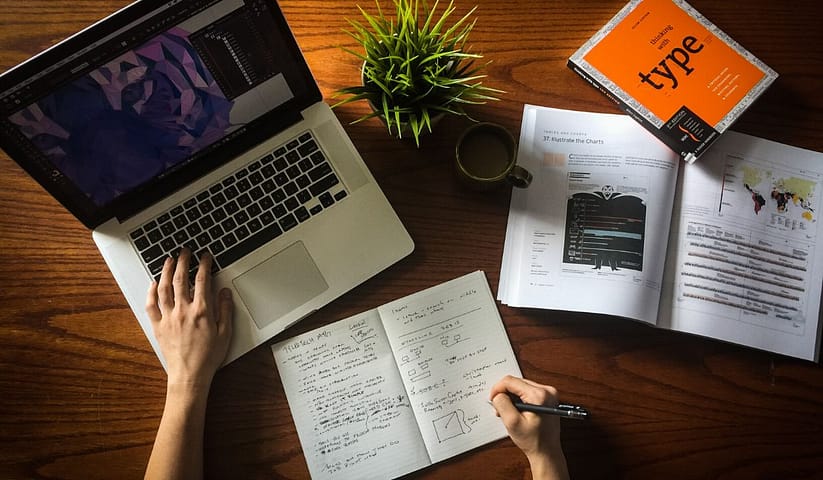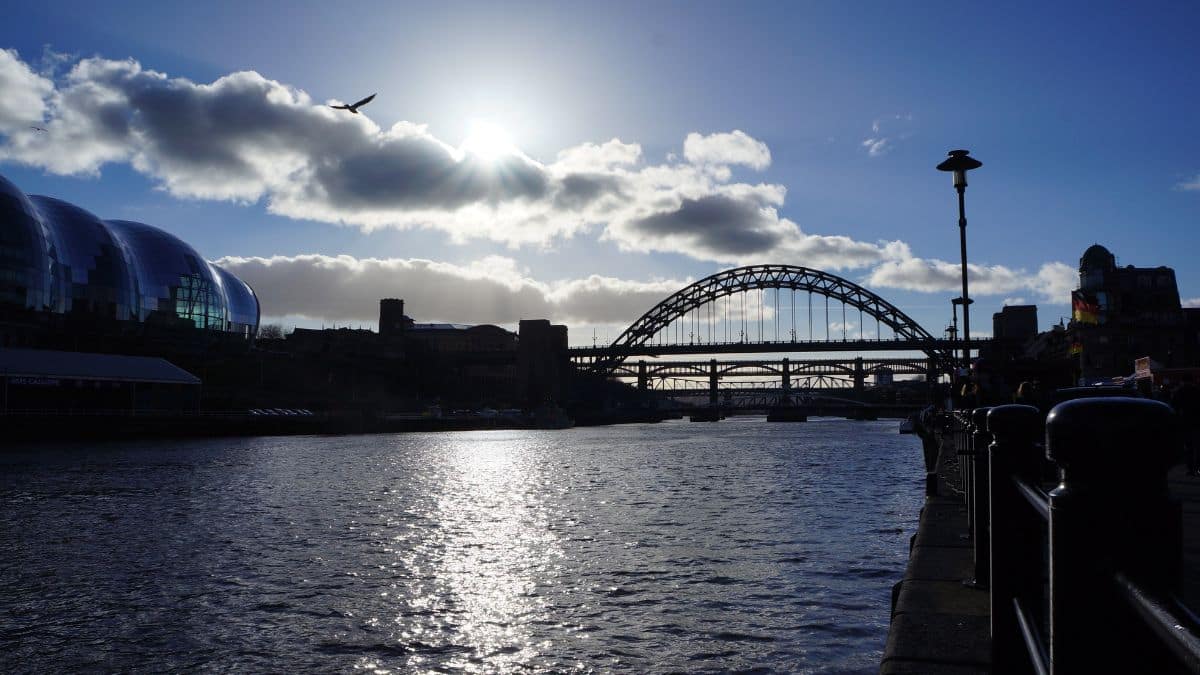In this post in my Freelancer’s Guide series, I’m going to be looking at freelancer portfolio building and how to get started with it. I’m going to talk you through how to build a freelancer portfolio from scratch, using free tools as much as possible. If you’re planning on going freelance at any time in the future, it’s really important to get this bit right. There are a couple of affiliate links in this post to tools that I think will help you design and create your own portfolio for free. So, if you’re interested in freelancer portfolio building then read on.
- Getting started with freelancer portfolio building
- Freelance web designer, writer or tutor – how do you build different types of portfolios?
- How do you present your work in a freelancer portfolio?
- What needs to go into my portfolio?
- How do I design my portfolio if I'm not creative?
- Experience takes time, so will your portfolio
- How are you going to design and build your freelancer portfolio?
Getting started with freelancer portfolio building
No two freelancers are exactly the same. Nor should they be either. Your freelancer portfolio is essentially your calling card. It needs to be a visual CV of what you have to offer, without giving too much away for free either. What’s key to remember here is that different types of portfolios will suit different types of freelancers. For example, a freelance web designer will need a somewhat different type of portfolio than a freelance make-up artist.
Before you start building your portfolio, you need to do some organisation. Grab your journal or planner and make a list of the top five pieces of work you’ve ever done. Make sure they’re the best ones! Remember about revising your content to make sure you’re putting your best work out there. As a freelancer, your portfolio is a showcase of your very best skill and talent. Try to resist the temptation to stuff it full of everything!

Freelance web designer, writer or tutor – how do you build different types of portfolios?
Depending on your specific role, you may find it helpful to work with certain types of tools. If you’re a freelance writer, there are websites that will collate all of your articles into a feed and present them into a portfolio on your behalf.
If you’re in journalism, writing, blogging or PR, for example, then Muck Rack can provide you with this kind of article collation as well as the option to put together a mini-portfolio. Similarly, Contently is another free-to-use portfolio provider that you can use to put all of your best work together and present it professionally.
Having said that, you don’t need an external source to help you put a portfolio together. If you have your own website, as most freelancers tend to have, then you can create your own within it.
I have a dedicated portfolio page on my blog here and also on my art shop website. That way, I can represent the different skills I have to offer clients, without it looking muddled or confusing.
The downside to doing this, of course, is that you have to drive traffic to your websites in the first place in order for your freelancer portfolio to actually be seen. For that reason, it’s not a bad idea to maintain an external portfolio as well as your own. Just make sure to keep it updated regularly as you create new work.
How do you present your work in a freelancer portfolio?
If you start thinking of your portfolio in visual terms, rather than as another part of a CV, then you’re off to a good start. It goes without saying that as a freelancer, you need an online presence. If you don’t already have your own website, then I’d strongly suggest getting one. It’s not as difficult as you might think.
Things you’ll need to get yourself established online quickly are as follows:
- a domain name – preferably your brand’s name, or even just your own name, whatever you think is a good professional representation of yourself and your skills
- website hosting – I’d recommend getting this at a separate place to where you bought your domain, just in case anything goes wrong in future
- ideas about the design of your website – by this, I mean the look and feel of your online presence. What colours will you use? How do you want to represent yourself online? What fonts will you choose to make your brand stand out?
- An email account linked to your domain – it’s a lot more professional to have an email account that’s linked to your website’s domain as opposed to a standard free Gmail or Outlook account, but that’s a minor point.
Take some time to draw out what you want your online portfolio to look like. You can do this part while all the technical stuff is being set up in the background. Once you’ve got a clear vision to work with, your freelancer portfolio can begin to take shape.
Remember, your whole website is not your portfolio. Prospective clients need to see a birds-eye view of what you can offer them. They’re not going to spend their time trawling through your entire site to find what they want! So make sure you don’t assume that having a website or blog is a portfolio in its own right.

What needs to go into my portfolio?
If you’re a freelance writer, include snapshots of five to ten of your very best articles. You can use free image tools like Canva to create eye-catching thumbnails on the page and then link to your articles from there. You don’t want to include the full text of your posts, or your portfolio will end up boring people. Make it visually appealing and rapidly informative. You’re giving a prospective client a taste of what you can do; make sure you don’t serve them the full meal!
Freelance artists, make-up professionals or freelance graphic designers, for example, need to put an even greater emphasis on the visual presentation of their skills. Including a gallery or image grid that shows off their very best artistic creations is a great way to do just that. Make sure to include a short paragraph about how to get in touch with you at the top or bottom of your portfolio.
You can also include a price list on this page if you want to offer your clients a transparent process, but this depends on the services you’re offering. You might want to just chat over email first, which is fine as well. Just make sure you’re clear, concise and present yourself in the best light. That way, you’re more likely to attract and retain your client’s interest.
How do I design my portfolio if I’m not creative?
You don’t have to be creative to make your freelancer portfolio really stand out, but it can help. Think about text formatting if you’re not comfortable including images. Headings, fonts, and even a bullet-pointed list of work you’ve done are better than a rambling paragraph.
Another great thing to add to your portfolio can be testimonials. If you’re not keen on adding pictures or infographics, you can check out tools like Adobe Express as well as Canva, which are free-to-use and easy ways to create visually pleasing testimonial boxes or social media posts. You can then insert these into your portfolio page on your website. Let your previous clients help you out by asking them for feedback that you can share online.
If you do a lot of work online, you can use Microsoft’s Snip and Sketch app free on Windows 10 to take screenshots of your projects as you work on them. These can then be edited, cropped and saved as image files that you can upload into your portfolio really easily.

Experience takes time, so will your portfolio
It may be that you’re just starting out as a freelancer and you don’t feel like you’ve got anything to put in a portfolio yet. That’s fine! These things take time. Even if you just began working as a freelancer, keep a note of the projects you’ve done as you go along. There will come a point where you have about five things you’d be happy to include in your portfolio.
Don’t worry about having anything in there when you first start. It’s better to take your time and add in items that really showcase your best work than to stuff it full of anything and everything as you’re just starting off.
Likewise, try and identify when it’s time to go back to your original portfolio build and start tidying things up a bit. Maybe the work you’ve been doing has evolved, and actually, you’ve got a new section on web design you’d like to include in there. Perhaps you’ve started editing YouTube videos and have some clips to add to your portfolio as a showreel. One of the great things about going freelance is that you have the flexibility to adapt and refine your skills as you go along – just remember to update and refresh that portfolio as you do!
How are you going to design and build your freelancer portfolio?
I’d love to hear from you if you’ve created your own freelancer portfolio! What tools have you used to help you along the way? Let me know in the comments if you’ve got any ideas to help with building your freelancer portfolio from scratch!
You might enjoy some of the pins on my Freelancer Tips board on Pinterest too. Keep your eyes peeled for the next post in my Freelancer’s Guide if you’ve enjoyed this one, and please do give this post a share if you think it’ll be helpful to others.
Freelancer portfolio FAQs
A freelancer portfolio is a visual snapshot of your best work, and is essential for growing your business as a sole trader. It should show a prospective client your skills and services, to help them decide that you’re the one they want to work with. In short, it’s got to be eye-catching, full of substance and hard to say no to!
It takes time and a bit of creativity, but you can build a freelancer portfolio from scratch using a range of third-party tools or simply via your own website. It’s a good idea to have both of these when you’re just starting out as a freelancer.
You need to get yourself organised first and work out what services you can offer. Then, find five or six pieces of your best work to represent those services, and present them professionally on your portfolio page. You don’t need to put everything you’ve ever done in there – think quality over quantity!
Not necessarily, but it helps. Your main job in the gig economy is to convince your potential clients that you’re the best choice for the job they need help with. If you have evidence of your skills and experience that they can see for themselves, they’re more likely to take you seriously. Your portfolio is your business’ calling card, so make it good!
It certainly helps! Different types of freelancers need different types of portfolios; don’t assume it’s enough just to let your website speak for itself. You need to showcase your skills regardless of specialism; portfolios aren’t just for creative professions!




